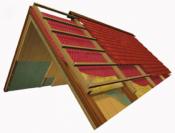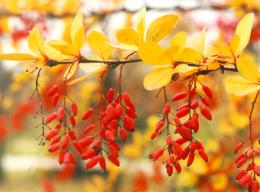Search
Login
Ornamental and medicinal plants on the site. Barberry: planting, care and pest protection
In the wild, barberry sprouts in forest edges and glades, in beams and on the slopes of ravines. But recently, more and more often you can find shrubs of barberry in summer cottages and city alleys. The popularity of barberry is due to its good decorative qualities and healing properties, which have found application in folk and traditional medicine.
Consider the main points for growing ornamental shrubs in the garden, and dwell on options for its use in landscape design and for medicinal purposes.
Content
- Barberry decorative shrub with useful properties video video
- Types of Barberry video video
- We plant barberry in a summer cottage
- Features of barberry care
Barberry decorative shrub with useful properties
Summer residents fell in love with barberry for its beautiful, elegant appearance and resistance to various weather conditions (drought and frosty winters).
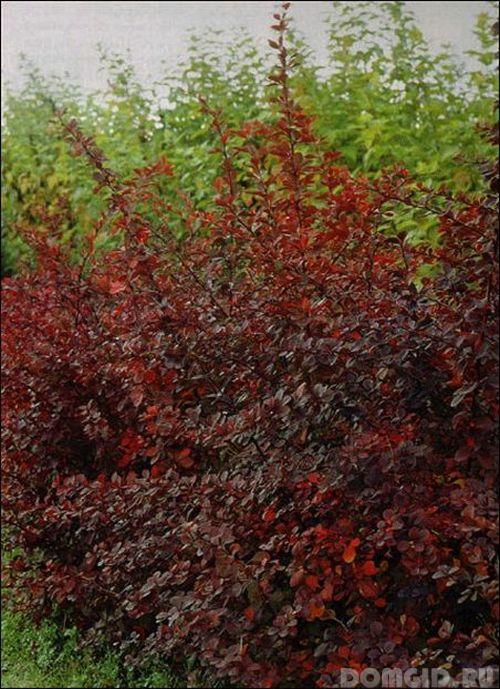
Barberry is a thorny shrub with simple small leaves. The arrangement of leaves on the shoots is single, in a spiral. A candy shrub blooms in the period from May to June with golden yellow flowers collected in racemose or thyroid inflorescences.
Plant height, leaf color and fruit shape depend on the specific type of barberry. Therefore, decorating the garden, you can choose the most suitable for landscape design variety of barberry shrub.
In garden decoration, barberry can be used both as a single plant and in a group composition. Here are the options for using barberry in the landscape design of a summer cottage:
- The hedge of barberry, the height of the bush, its hard and sharp thorns, about 20 mm long, allow the plant to be used as a fully functional fence. Within a few years after planting, the bushes grow and fill with branches of the void between the plants, a rather dense and decorative hedge is formed. To speed up the process, it is necessary to trim the long branches of the bush. Such a hedge can be used to separate the suburban area from the neighboring one, and to delimit the space in the garden.
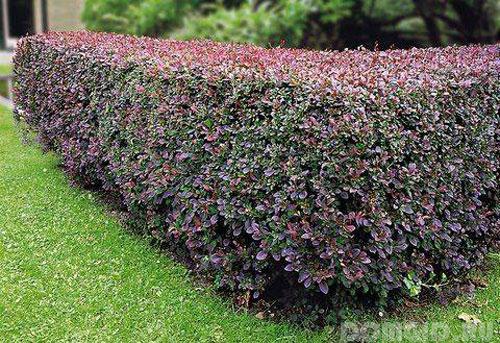
- The design of paths and borders low-growing varieties of barberry visually expand the paths, giving them a clear, regular shape. For the design of the tracks, it is better to use varieties of spherical shape. It is extremely undesirable to use barberry near the playgrounds when playing, children can easily injure themselves on the thorns of the bush.
- Rockeries and the Alpine hill unpretentiousness of a candy bush allows you to use it to create interesting landscape compositions. Barberry can be both the central element of the alpine hill and the background for other plants. It is better to plant dwarf and medium-sized varieties, depending on the size of the slide or rockery itself.
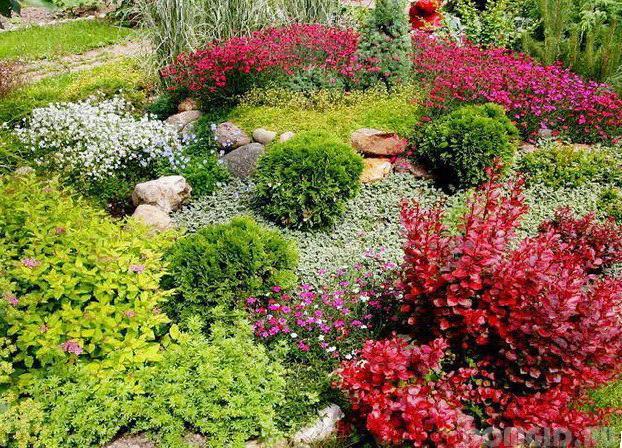
- Single plantings of barberry look appropriate in large garden plots, parks. Most often, one large shrub is planted, reaching a height of up to three meters. A bush of barberry with large red leaves and a yellow trim harmoniously blends with the green lawn. Such a plant will become a bright element of the entire garden.
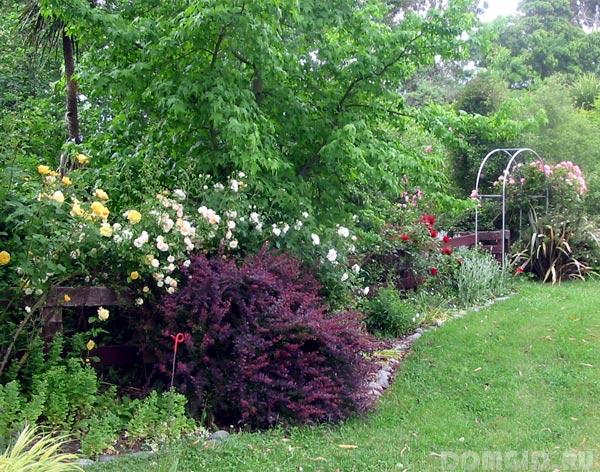
As a medicinal plant, barberry has established itself since the time of Ancient Egypt. For the treatment of many diseases, not only the fruits of the bush were used, but also its leaves, bark, roots. In the pharmacies of pre-revolutionary Russia barberry syrup and jam were sold, which were recommended for scurvy, fever and digestive upset.
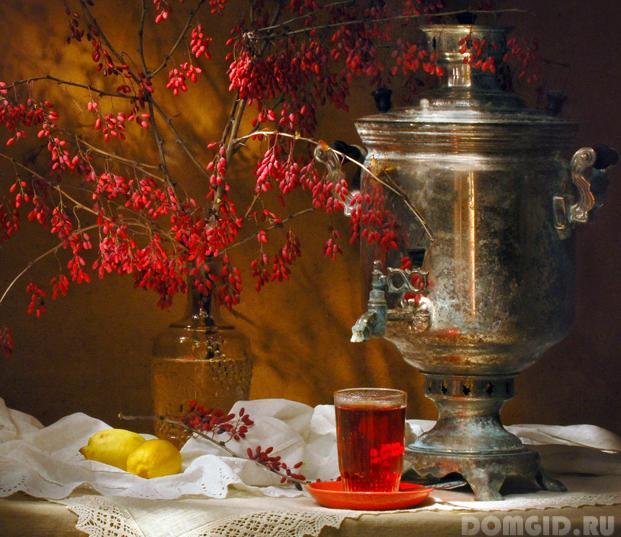
The healing properties of barberry are explained by its unique and rich chemical composition. The rafts contain about 7% sugars (fructose and glucose), 5% acids (malic, tartaric and citric), 1% pectin, vitamin C and carotene. The main active ingredient in barberry is alkaloids (from 10 to 25 mg%), represented mainly by berberine.
In international practice, barberry-based drugs are used for gastric diseases, skin diseases, to stop internal bleeding and in the treatment of the gall bladder and liver.
Berries of barberry are widely used in cooking: as a seasoning for many dishes, for the preparation of sauces and various confectionery products.
There are contraindications to the use of barberry fruits and medicines based on it. First of all, restrictions apply to pregnant women and children.
The green, unripe fruits of barberry are poisonous!
Types of Barberry
In nature, there are about 500 species of barberry shrubs. In Russia, the varieties of the two main types are most common: common barberry and Thunberg barberry.
Barberry ordinary Differs in good winter hardiness and resistance to dust, drought. Thorny shrubs up to 2.5 meters high with sprawling arched shoots. The leaves have an ovoid shape, the color is dark green. In May-June, the shrub blooms with yellow melliferous flowers, the berries of barberry ripen by autumn.
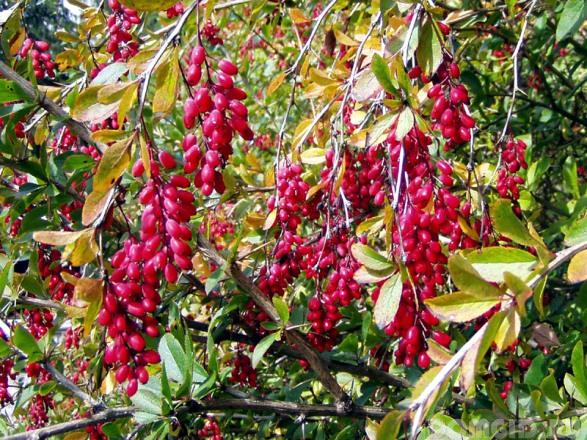
The fruits of barberry ordinary are quite suitable for eating, and the plant itself can be used to create an unpretentious hedge, in single or group plantings.
Particularly loved by gardeners and gardeners varieties Barberry Thunberghaving good decorative qualities. These are medium- or undersized shrubs up to one meter high with sprawling and dense shoots. The color of the shoots changes throughout the growing season from pale yellow to purple-brown. The fruits of coral red have a bitter aftertaste and are not suitable for eating. Therefore, they can remain on the bush all winter and be a decoration of the garden even in the cold season.
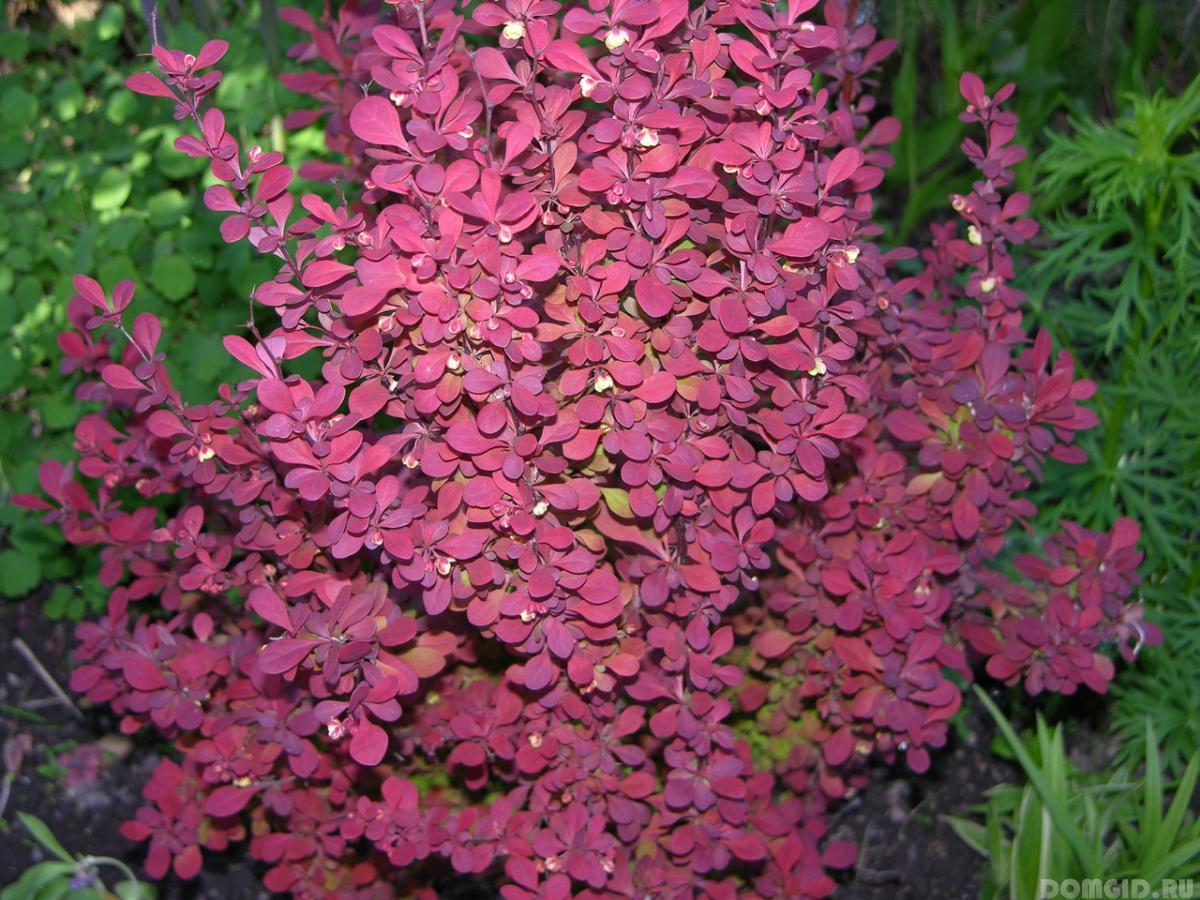
Thunberg’s barberry is less frost-resistant than his common barberry, but it is more resistant to pests and diseases (powdery mildew and rust).
We plant barberry in a summer cottage
methods of propagation of barberry
Almost all types of barberry can be propagated vegetatively (by cuttings, dividing the bush or root system) and seeds.
With vegetative propagation, it is possible to maintain varietal characteristics of the plant. Cuttings are harvested from the strong green shoots of the current year. For planting, it is better to use the middle part of the shoot with two pairs of leaves (two nodes) and one internode. The length of the handle should be about 10 cm, and the shoot diameter of 5 mm. Above, the stalk is cut at a right angle, and below at an angle of 45 degrees.
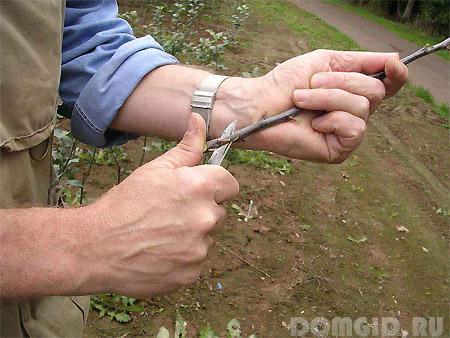
Lignified shoots will take longer to root, for cuttings they are cut in November and stored in a dark, cool place until spring.
Prepared cuttings are planted in boxes (a mixture of sand and peat in a ratio of 3: 1) at an angle of 45 degrees. Rooting requires increased humidity in the room (up to 85%) and an air temperature of 20-25 degrees. On hot days, seedlings need regular watering and spraying. Cuttings that have taken root are best left to strengthen in the same room for another 1-2 years.
Plants aged 3-5 years can be propagated by dividing the bush. In early spring, barberry must be dug up and the pruner carefully divided the bush into 2-3 parts. Each shrub is planted in a new prepared place.
If the barberry shoots began to branch above the soil level, then reproduction by dividing the bush is impossible
To collect seeds, barberry fruits are pressed, squeezed through a sieve, washed and dried. Sowing seeds can be in autumn or spring.
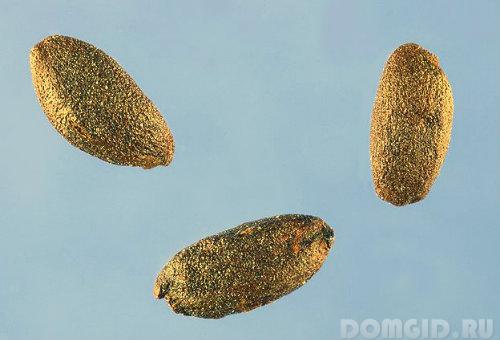
In autumn, the seeds are laid in the grooves (depth 1 cm), while it is important to prevent waterlogging of the soil. Before spring sowing, the seeds must be stratified (temperature 2-5 degrees, period 2-4 months).
when and where is it better to plant barberry
For planting barberry, you need to choose a well-lit place on the site, since this is a photophilous plant. Barberry will grow in the shade, but over time the leaves will lose their brightness and beauty. If barberry is planted for medicinal purposes, and the roots of the plant will be used as a medicine, then it is better to plant a shrub in partial shade, which contributes to the active growth of the root system.
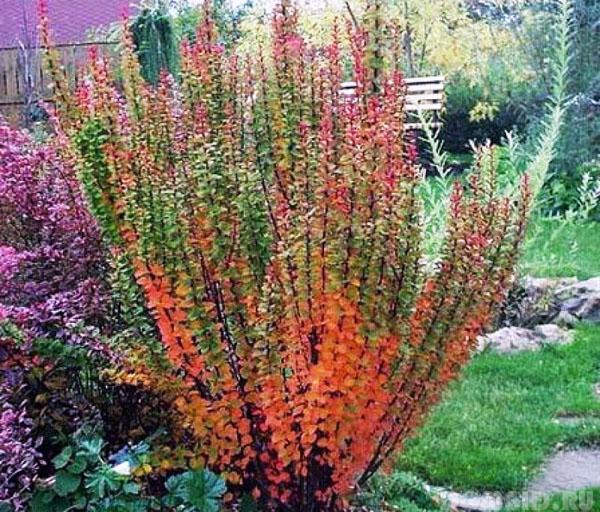
Most gardeners are inclined to believe that it is better to plant barberry in the fall, since in the spring plant seedlings begin to grow early. As an option, spring planting of seedlings can be carried out before budding. In the spring, stratified seeds of prickly shrubs are sown.
soil preparation and planting
To plant the seeds of barberry ordinary in the autumn, it is enough to dig the earth to a depth of 40 cm, remove the weed roots and make fertilizer (superphosphates, potassium salt, lime, organic fertilizers).
If you plan to plant Thunberg barberry seedlings or two-year-old common barberry seedlings, then soil preparation may include the following steps:
- Dig the soil to a depth of 60 cm in the fall, remove all visible weeds.
- Dig out landing holes measuring 40 * 40 cm.
- Sprinkle the bottom of the hole with a fertile layer of soil.
- Fertilize (250 grams of superphosphate and 50 grams of potassium salt per bucket of organic fertilizer).
- Add soil fertilizers on top and mix a little (when planting, you must ensure that the roots of the plant do not come in direct contact with the fertilizer, a burn of the root system is possible).
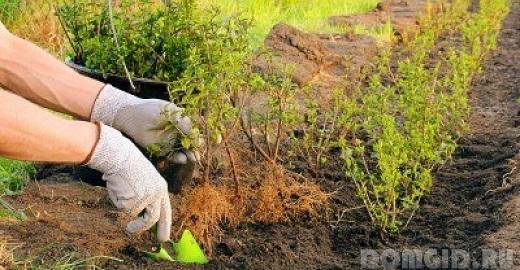
In ready-made wells, we plant seedlings of barberry, leveling the roots of the plant. After this, it is necessary to water, gently sprinkle with earth and compact with your hands. The first fruits of barberry can be expected in two to three years.
Barberry seeds are sown to a depth of 0.5 cm and mulched with a layer of peat (1-1.5 cm). Seeds planted in spring should be watered regularly. The first berries will appear in the fourth to fifth year after planting.
Features of barberry care
watering and top dressing barberry
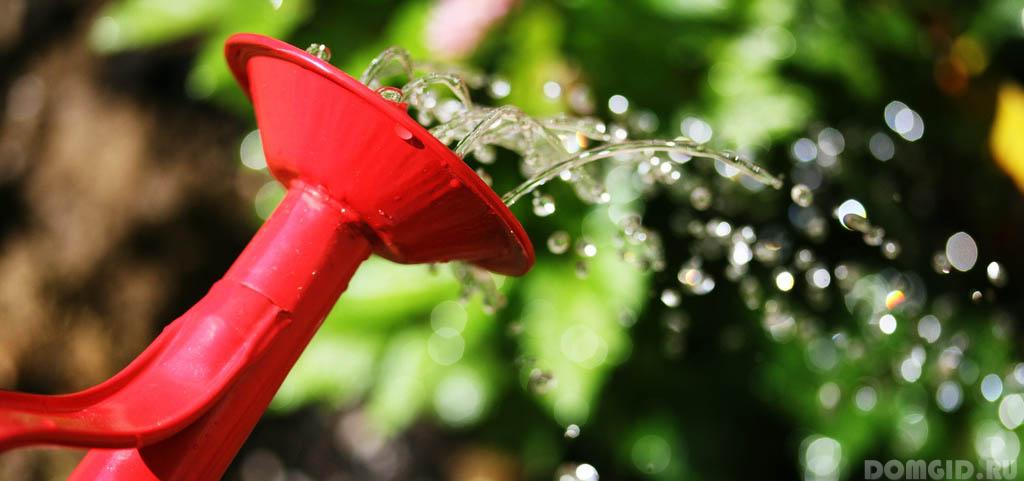
Frequent watering is needed by young seedlings of barberry. After the plant is well rooted and settled, the bush should be watered once a week. It is advisable to carry out loosening of the earth around the bush and, if necessary, weeding.
A year after planting, barberries begin to be fed. In spring, the shrub should be poured with a solution of 2% urea solution, and in the fall, when digging, it is necessary to add compost or humus 1-2 buckets for each plant (for adult shrubs 2-3 buckets).
Separately growing barberries are enough to be fed with complex universal fertilizers once every 3-4 years, and a hedge of barberry needs frequent top dressing at least twice a year.
protection against diseases and pests
Growing barberry in the country, you must remember that the plant can often be attacked by pests of flower moths and aphids. Therefore, bushes should be inspected regularly.
Aphids dry out and wrinkle leaves. To prevent its occurrence in spring, the bush is sprayed with a tobacco solution (in a bucket of boiling water 0.5 kg of shag must be brewed) or with a soap solution (300 grams of laundry soap is dissolved in 10 liters of water).
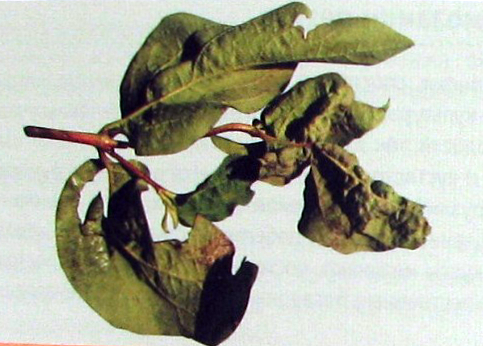
Moth eats berries of barberry. It can be removed by treating the bush with chlorophos (0.1-0.3%) or decis (0.05-0.1%).
White plaque on the shoots, leaves and fruits of barberry is a sign of the appearance of powdery mildew, the causative agent of which is a microsphere fungus. The fungus multiplies rapidly and infects healthy plant shoots. Heavily affected leaves and branches are cut and burned, and the rest need urgent treatment with a sulfur-lime mixture or a solution of colloidal sulfur. For prevention, the first treatment should be carried out during the period of leaf blooming, the next two weeks later.
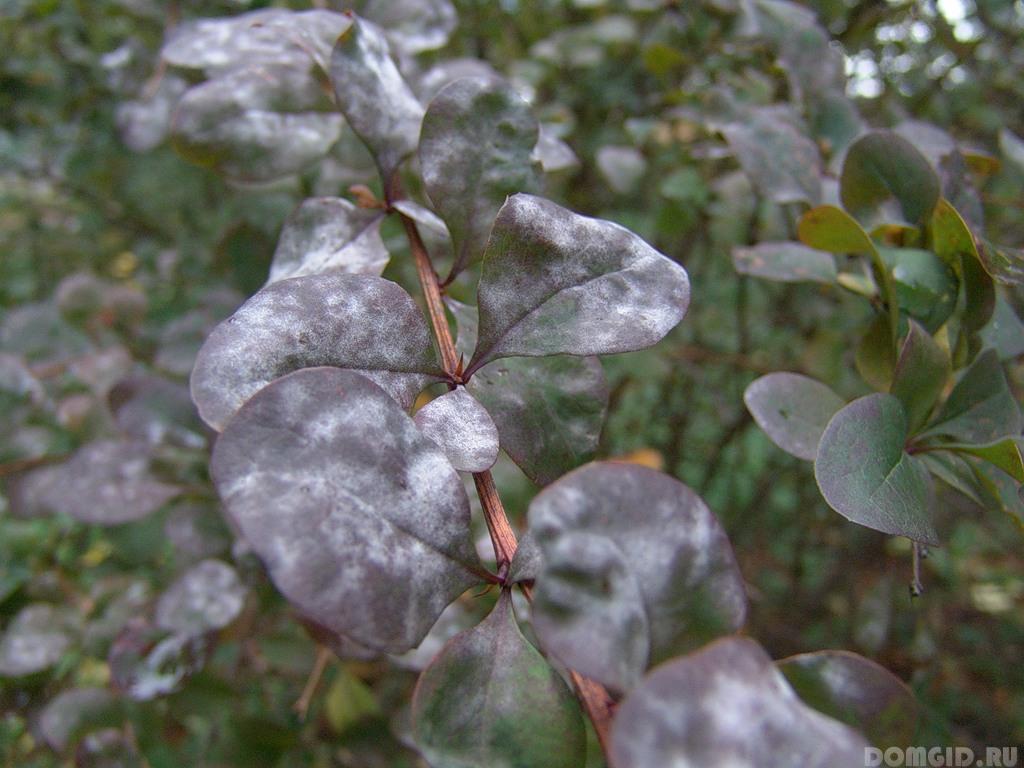
Barberry ordinary can be affected by rust, especially if it grows close to fields with cereal crops. Orange spots appear on young leaves (convex pads form on the inner plate of the leaf). Over time, the leaves can completely dry and fall. To prevent this, the plant must be sprayed with a solution of Bordeaux fluid (1%) or a solution of colloidal sulfur (1.5%). Thunberg barberry varieties are not affected by rust.
Bacteriosis (caused by a bacterium of the genus Pseudomonas) can develop on the branches and leaves of barberry. The disease is accompanied by the appearance of dark, watery spots, cracked shoots, uncharacteristic (cancerous) formations. Bacteriosis does not affect the fruits and flowers of barberry. As therapeutic measures, the bush is sprayed with copper oxychloride (10 liters 30-40 grams); processing is done before or after flowering barberry.
rules for pruning and wintering barberry shrubs
Sanitary cleaning of barberry bushes should be carried out regularly. Thin, dry or overgrown branches are cut.
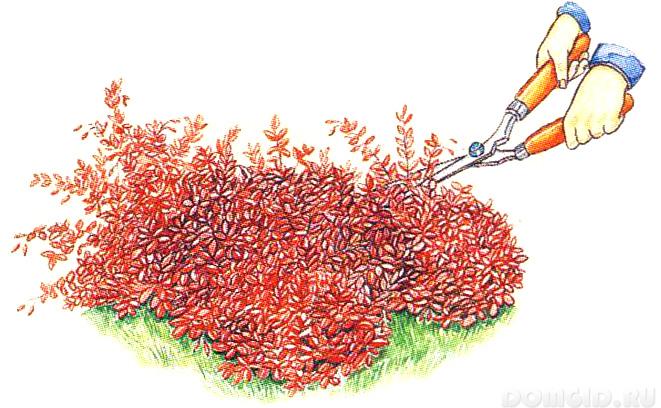
Pruning barberry is also done during the formation of the decorative form of the bush. If barberry is used as a hedge, the number and length of stems is regulated depending on the size of the hedge itself. If barberry is a central element in landscape design, the bush is formed more powerful and lush. When it is planned to collect a good crop of berries from barberry, it is necessary to thin out the shrub, since in the shadow of the branches the plant will bear fruit poorly.
Pruning to rejuvenate barberry should be done in early spring (before buds open). In this case, it is necessary to remove the old branches to cut them almost at the base of the bush.
Barberry ordinary tolerates frosty winters, but Thunberg barberry (especially in the first two years after planting) needs to be insulated with peat, dry leaf or spruce branches.
In principle, if we compare barberry with other ornamental and berry bushes, then it needs less care, although it is notable for its versatility in landscape design, the treatment of many diseases and the preparation of a variety of culinary dishes.



